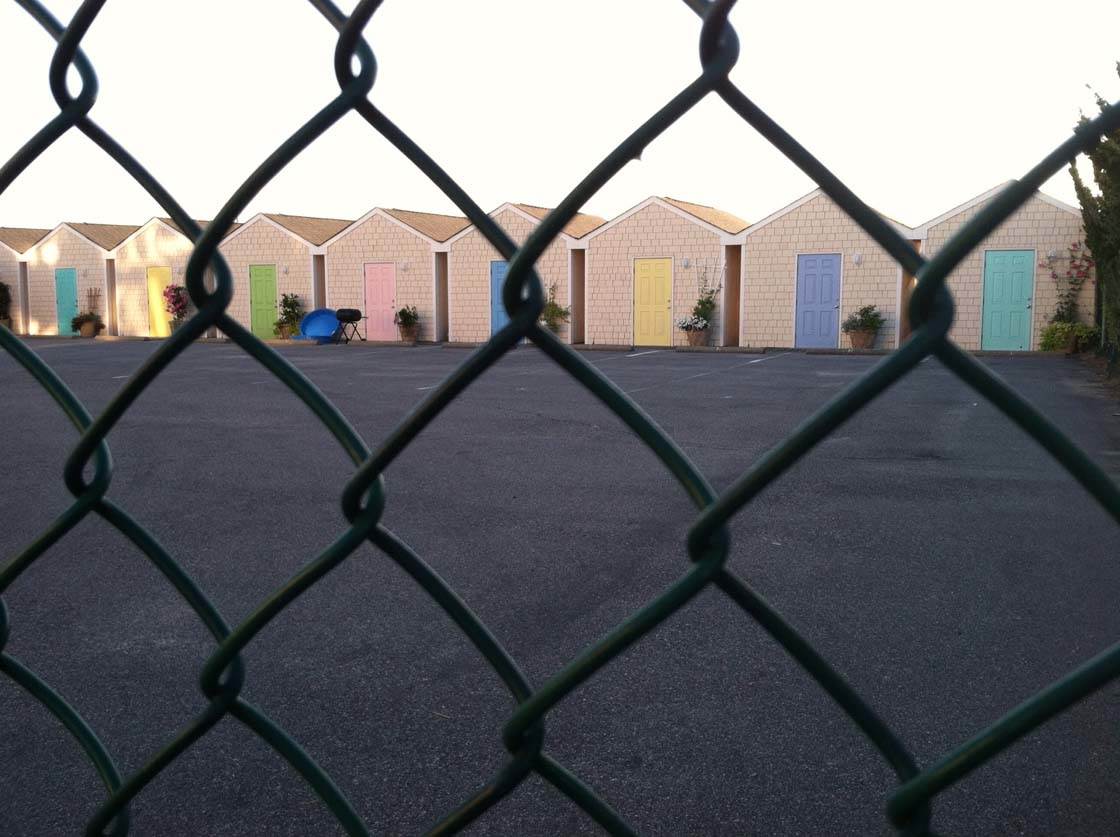Point of view is often described as where you stand to take the photo. But it’s much more than that. Fundamentally, it’s your creative standpoint that determines your point of view. In this tutorial, you’ll discover five ways to challenge your creative perspective and sharpen your point of view when taking photos with your iPhone.

Just as a story is told from the narrator’s outlook and viewpoint, as a photographer, you bring your individual point of view to each photographic story.
We each have a unique way of narrating our photos, but sometimes telling stories from the same perspective can become stale. If we challenge ourselves to stretch in new directions we can keep our eyes and photos fresh.
1. Challenge Yourself With Subject Matter
Your point of view begins with your subject. What do you love to photograph? Landscapes, architecture, people, nature?
Whatever you like shooting, challenge yourself to think outside the box about your subject matter. Don’t always go for the obvious shot. Photograph non-traditional subjects. Or try working with a subject that you’ve found intimidating in the past.

I saw this ornament hanging from a window at a friend’s house. At first I hesitated to photograph it because I didn’t think it would make a compelling photo, and I wasn’t sure whether my subject was the ornament or the window.
I’m glad this didn’t deter me from taking the photo. Every time I see it, I notice something new and beautiful about it. Challenging your creative point of view often results in surprisingly wonderful images.

You can change how the viewer sees your subject by emphasizing a specific part of the whole. The photo above is shot close up – so close that you can’t tell it’s a photo of a fire hydrant.
This proximity simplified the image and allowed me to capture the texture of the peeling paint, making this mundane object more engaging.
Photographing familiar objects is a great way to practice getting more creative with your photography. Try looking around your home or garden and attempt to capture unique shots from unusual angles.
2. Tell A Different Story
What story do your photographs tell? Is it a story of emotion, color, action, texture? Examine the photos in your camera roll for a theme and try to summarize your photographic story in one sentence.
Now, challenge yourself to tell the opposite story. For example, if most of your photos are black and white landscapes, try shooting colorful abstract images. If you mostly shoot close-up macro photos, give street photography a try.

My preference is to photograph objects that appear forgotten, alone, quiet, empty and imperfect. The creative challenge for me is to tell a story that’s vibrant and full of action and energy, more like the photo below.

3. Shoot From A Unique Angle
Our natural instinct is to take photos from a standing position and at eye level because this is how we see the world. Think about how to capture your subject in a new way simply by positioning yourself in a different place.
The beauty of the iPhone is that it’s small and lightweight, allowing you to place it on the ground or set it on top of something to get a truly unique shot.

I shot this photo while I stood under a billboard. We all recognize the front of a billboard, but this image presents an unexpected viewpoint.
Instead of shooting head on, challenge yourself to photograph from an unusual angle. Take photos from high up above your subject or shoot from a low angle.
You may have to sit or lay on the ground to get the best shot. Sometimes you’ll need to move closer or further away. Remember to look inside or underneath your subject too.
If it’s possible, walk around your subject to find the angle with the most unique perspective. It may be the side or rear view that is the most intriguing.

I was taking a walk when I spotted this large crack in a wall. When I found the right angle, I noticed other points of interest, like the trees on the other side of the wall and the sunlight streaming through the top of the crack.

Another idea is to shoot from your subject’s point of view, perhaps standing next to them or shooting over their shoulders to capture what they see.

This photo of a girl waiting for a ride was literally shot from the hip. Although you can’t see the girl’s face, the angle of the photo conveys her viewpoint and body language.
4. Experiment With Focus
Focus is about where you want the viewer to look when they see your photograph. To set the focus point, simply tap on the area of your iPhone screen that you want in focus.
On my last trip to Virginia Beach, I saw these colorful beach houses hidden behind a fence – an idyllic and inaccessible little world. My natural inclination was to focus on the beach houses as I did in the photo below.

But then I took another photo focusing on the fence instead, as shown in the photo below. Notice how the change in focus has enhanced the story by creating a stronger sense of separation.

Challenge yourself to change your natural focus. Focus on the most unlikely aspect of the photo. Focus on the smallest part of the subject, or the most insignificant. You’ll be surprised at how much this will change the story of your photo.
5. Shoot In Different Orientations
Orientation is about how you hold your iPhone while you take the photo. By holding the iPhone vertically (portrait orientation), you will take a vertical photo. Hold it horizontally (landscape orientation) for horizontal photos.
You can also change your camera settings to take square photos. These different orientations help you selectively focus on your subject and frame the scene. They can also change how we perceive distance in an image.
Since our eyes are set horizontally across from each other giving us a view that is wider than taller, we naturally see the world from a horizontal perspective.

Horizontal orientation is best used when the subject is wider than it is tall. This orientation also allows you to show movement and convey a sense of space around the subject. Notice how the walkway appears much wider in the photo above than in the photo below.

Vertical orientation is best used when the subject is taller than it is wide. This orientation helps to accentuate depth and focus attention on a single subject. In the vertical photo above, the walkway appears long and narrow and the door seems much farther away than in the horizontal photo.

The square format simplifies your composition, forcing you to focus on the most important part of your scene. Shapes, lines and negative space (the blank space around your subject) tend to become stronger elements in photos with square orientation.
Recently, I’ve noticed the majority of my photos are taken in vertical orientation instead of horizontal. Scroll through your camera roll. What orientation do you prefer?
Now step outside your comfort zone and challenge yourself to try a new orientation. Or, try cropping your photos into a different orientation.
If you experiment with these challenges, they should help you to sharpen your point of view and expand your creative vision when shooting with your iPhone.


Thanks for these great tips Kristen! It’s so important to keep challenging ourselves in order to keep improving our photography 🙂
Great job as always, you are such an inspiration, Thank you for all the time, dedication and help.
Best
Gracei !!
yes there is a lot of to think
I love these tips! Thinking out of our comfort zone.
So glad you all enjoyed this tutorial. I hope it helps you take your iPhone photography to new levels!!